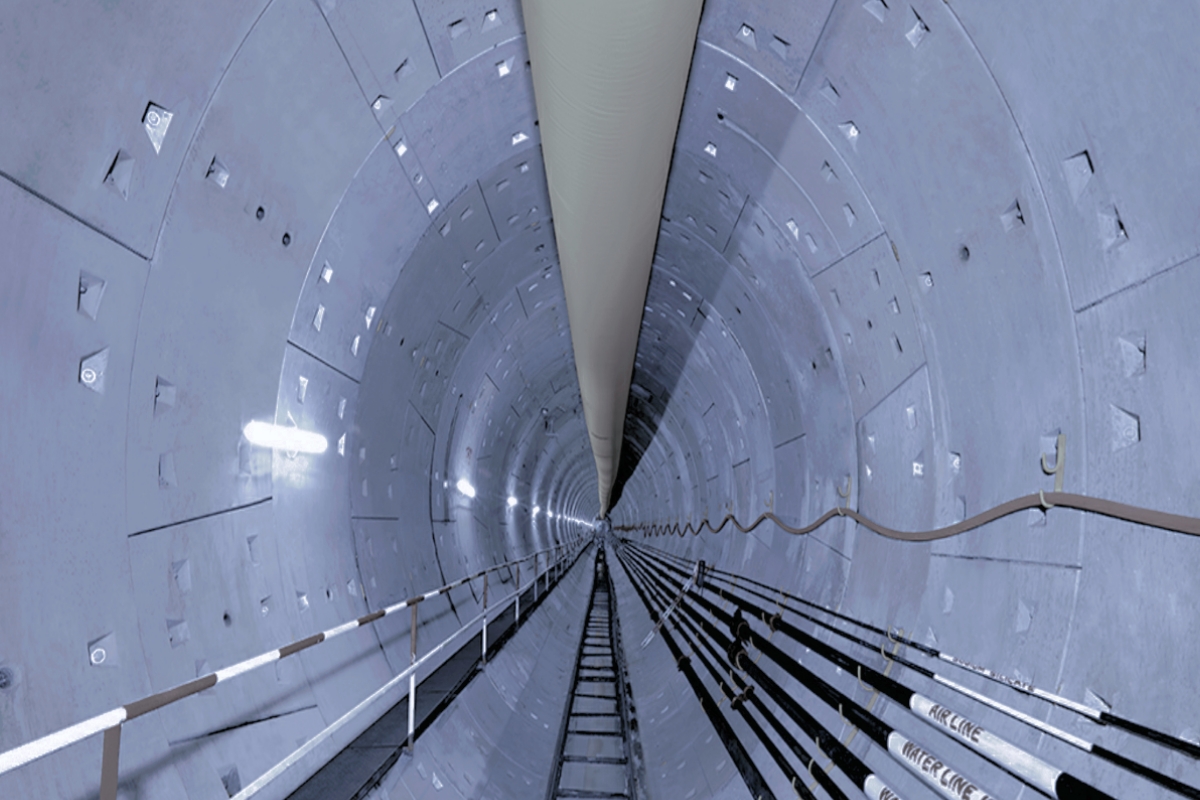New Austrian Tunneling Method is a very popular tunnel boring method. It is also called as NATM. This guide explains New Austrian Tunnel Method in detail.

Table of Contents
What Is New Austrian Tunneling Method?
The new austrian tunneling method utilizes the strength of the surrounding soil to reinforce the tunnel structure. It is both a design philosophy and a construction technique that emphasizes constant monitoring of ground conditions.
New austrian tunnel method is used to bore small tunnels. This method is not suitable to bore more than 2 km distance.
The process is flexible and adaptive, with drilling and design adjusted based on ongoing monitoring. Ground support is installed as needed, with reinforcement added to the shotcrete where necessary.
The final support usually involves a cast-in-place concrete lining over a waterproofing membrane, although other options may be used.
Concept
The New Austrian Tunneling Method is a highly flexible approach to tunnel construction that allows for adjustments to be made on the fly based on observed changes in geomechanical rock conditions. However, to be effective, careful monitoring and measurement are required, especially when encountering unexpected changes such as crevices or pit water.
Unlike traditional tunneling methods that rely on heavily engineered supports, the New Austrian Tunneling Method uses the strength of the native rock mass as the primary component of tunnel support. Shotcrete protection is applied immediately after face advance to create a thin layer of support.
Measurement and monitoring are essential parts of the New Austrian Tunneling Method approach, with potential deformations measured using instrumentation embedded in the lining, ground, and boreholes. Additional supports are installed only when needed, resulting in overall cost savings.
The New Austrian Tunneling Method approach also relies on flexible support, including rock bolts, wire mesh, and steel ribs, rather than a thicker concrete lining. The minimum support measures required are determined by rock mass classification, avoiding economic waste from overly strong support measures.
Advantages And Disadvantages Of New Austrian Tunneling Method
Here are the advantages and disadvantages of new austrian tunneling method.
Advantages
- Flexible and adaptable to various geological conditions.
- Increased safety due to the use of ground support measures.
- Reduced environmental impact due to minimal surface disturbance.
- High construction speed and efficiency.
- Cost-effective in long-term construction projects.
- Can be used for both soft and hard rock conditions.
- Enables real-time adjustments to the tunneling process.
- Allows for the excavation of large-diameter tunnels.
- Minimal disruption to traffic and other surface activities.
- Can be used for a variety of infrastructure projects, such as transportation, water, and energy.
Disadvantages
- Requires highly skilled and experienced workers.
- Costly initial investments in equipment and training.
- Limited to medium and shallow depth tunneling.
- Can be affected by unforeseen geological conditions, leading to project delays.
- Risk of groundwater inflow and flooding during tunneling.
Faqs
The New Austrian Tunneling Method is a modern method of tunnel design and construction.
The NATM was developed in the 1960s.
The NATM integrates rock behavior and monitoring to provide optimized support based on observed ground conditions.
The NATM utilizes the strength of native rock mass, shotcrete protection, monitoring instrumentation, flexible support, quick closing of the invert, and a contractual system for changes in construction methods.
The NATM relies on the strength of the surrounding rock mass and employs monitoring for wall reinforcement, rather than reinforcing the entire tunnel.
Other names for the NATM include SEM, SCL, Centre Dividing Wall NATM, CDM, and UHVS.
